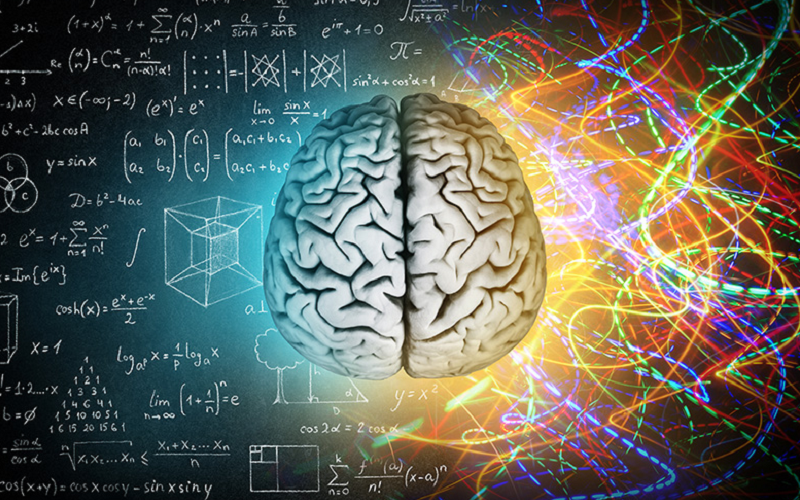
In today’s fast-paced and interconnected world, emotional intelligence has emerged as a crucial skill for personal and professional success. But what exactly is emotional intelligence, and how can we harness its power to enhance our lives? In this comprehensive guide we delve into the various aspects of emotional intelligence, providing you with practical worksheets, exercises, examples, and activities that you can use to boost your self-awareness, empathy, and relationship-building skills.
Contents
- Introduction to Emotional Intelligence
- Emotional Intelligence Worksheets
- Emotional Intelligence Exercises
- Emotional Intelligence Examples
- Emotional Intelligence Activities
- Related Emotional Intelligence Posts
- References
Introduction to Emotional Intelligence
Emotional intelligence, often referred to as EQ, has become a widely recognized concept in both personal development and professional settings. In this section, we will explore the definition and importance of emotional intelligence, its components, and the benefits of developing this essential life skill.
Definition and Importance of Emotional Intelligence
Emotional intelligence is the ability to recognize, understand, manage, and use emotions effectively in ourselves and others [1]. It goes beyond mere cognitive intelligence (IQ) and encompasses how well we navigate our emotions and social interactions. Emotional intelligence is crucial because it influences our communication skills, decision-making abilities, and interpersonal relationships. In today’s increasingly interconnected world, EQ is considered as important—if not more so—than IQ for personal and professional success.
Components of Emotional Intelligence
Renowned psychologist and author Daniel Goleman identified four primary components of emotional intelligence [2]:
- Self-Awareness: The ability to recognize and understand your own emotions, as well as your strengths, weaknesses, values, and motivations.
- Self-Management: The capacity to regulate and manage your emotions, staying in control even in difficult situations.
- Social Awareness: The skill to perceive and understand the emotions of others, being empathetic, and interpreting social cues accurately.
- Relationship Management: The art of building and maintaining healthy relationships, communicating effectively, and resolving conflicts.
By developing these four components, we can enhance our emotional intelligence and reap its many benefits.
Benefits of Developing Emotional Intelligence
The advantages of cultivating emotional intelligence are manifold, and they can significantly improve various aspects of our lives. Some of the key benefits include:
- Improved Mental Health: Greater emotional intelligence allows us to cope better with stress, anxiety, and other negative emotions, leading to enhanced mental well-being.
- Better Relationships: Developing emotional intelligence helps us communicate more effectively, empathize with others, and build stronger personal and professional relationships.
- Enhanced Decision-Making: With a higher EQ, we can better understand the impact of our emotions on decision-making and make more informed choices.
- Increased Professional Success: Emotional intelligence is a vital asset in the workplace, as it enables us to work well in teams, manage conflicts, and demonstrate leadership qualities.
- Greater Life Satisfaction: Overall, individuals with high emotional intelligence tend to enjoy a higher level of life satisfaction and well-being.
Now that we’ve established a foundation for emotional intelligence, let’s explore some practical tools and techniques for learning and developing these essential skills. In the following sections, we will delve into emotional intelligence worksheets, exercises, examples, and activities that can help you enhance your EQ and create a more fulfilling life.

Emotional Intelligence Worksheets
Worksheets can be incredibly valuable tools for enhancing your emotional intelligence. They offer a structured approach to self-reflection and self-improvement, allowing you to assess your current emotional state and develop strategies for growth. In this section, we will explore various worksheets designed to help you improve your self-awareness, self-management, social awareness, and relationship management skills.
Self-Awareness Worksheets
Developing self-awareness is the first step towards emotional intelligence. By understanding our own emotions and what drives them, we can better manage our emotional responses and make informed decisions. Here are two worksheets to help you build self-awareness.
Identifying Emotions
This worksheet helps you recognize and label your emotions, allowing you to gain insight into your feelings and better understand your emotional patterns. To complete this worksheet, write down a list of recent situations that elicited strong emotions in you. For each situation, identify the emotion you felt and rate its intensity on a scale of 1 to 10.
Understanding Emotional Triggers
This worksheet helps you identify the situations, people, or events that trigger specific emotions in you. By understanding your emotional triggers, you can anticipate and better manage your emotional reactions. To complete this worksheet, list your common emotional triggers and describe how they make you feel. Additionally, consider any patterns that emerge from these triggers and brainstorm ways to mitigate their impact.
Self-Management Worksheets
Once you have a solid understanding of your emotions, the next step is to develop strategies to manage them effectively. These worksheets will help you build your self-management skills.
Strategies for Managing Emotions
This worksheet is designed to help you identify healthy and adaptive ways to cope with various emotions. For each emotion listed, brainstorm several strategies you can use to manage it effectively. Keep in mind that different emotions may require different coping mechanisms.
Developing Emotional Resilience
Emotional resilience is the ability to bounce back from setbacks and adapt to challenging situations. This worksheet helps you evaluate your current level of emotional resilience and identify areas for improvement. Reflect on past experiences where you have faced adversity and consider the strategies you used to cope. Then, list the strengths and areas for improvement in your emotional resilience.
Social Awareness Worksheets
Social awareness involves recognizing and understanding the emotions and perspectives of others. These worksheets will help you develop empathy and enhance your social awareness.
Recognizing Others’ Emotions
This worksheet will help you improve your ability to identify and empathize with the emotions of others. List several situations where you interacted with someone who was experiencing strong emotions. For each situation, describe the other person’s emotions, any cues that helped you identify their feelings, and how you responded to them.
Understanding Social Cues
This worksheet focuses on enhancing your ability to interpret non-verbal communication and social cues. Reflect on recent interactions and identify instances where you may have missed or misinterpreted social cues. List these instances and consider how you can improve your observation and interpretation skills in the future.
Relationship Management Worksheets
Finally, effective relationship management is essential for building and maintaining healthy connections with others. These worksheets will help you strengthen your communication and conflict resolution skills.
Effective Communication Techniques
This worksheet is designed to help you evaluate your current communication style and identify areas for improvement. Reflect on recent conversations and consider how well you listened, conveyed your message, and responded to feedback. List your strengths and weaknesses in communication and brainstorm ways to enhance your communication skills.
Conflict Resolution Strategies
Conflict is an inevitable part of life, and resolving it effectively is a crucial component of emotional intelligence [3]. This worksheet helps you analyze past conflicts and identify effective strategies for resolving them. Reflect on recent conflicts you’ve experienced, and for each conflict, describe the situation, the emotions involved, and the resolution method used. Analyze the effectiveness of these strategies and identify areas for improvement. Brainstorm alternative approaches that could have led to a more positive outcome.
By completing these emotional intelligence worksheets, you’ll gain valuable insights into your own emotions and those of others, as well as develop strategies to manage your emotions and improve your relationships. In the next sections, we will explore emotional intelligence exercises, examples, and activities to further enhance your emotional intelligence and deepen your understanding of its practical applications.

Emotional Intelligence Exercises
In addition to worksheets, various exercises can help you enhance your emotional intelligence by allowing you to practice and apply the skills you’ve learned in real-life situations. In this section, we will explore a range of exercises designed to improve self-awareness, emotion regulation, empathy, and assertiveness.
Self-Reflection Exercises
Self-reflection is a critical aspect of emotional intelligence, as it enables us to understand our emotions, motivations, and reactions more deeply. The following exercises will help you cultivate self-reflection and foster greater self-awareness.
Journaling for Emotional Intelligence
Journaling is an excellent way to process and reflect on your emotions, thoughts, and experiences. Set aside time each day to write about your feelings, emotional triggers, and reactions to situations. Over time, this practice will help you identify patterns and gain deeper insights into your emotional landscape.
Practicing Mindfulness Meditation
Mindfulness meditation is a powerful tool for cultivating self-awareness and emotional regulation [4]. By focusing on your breath and observing your thoughts and feelings without judgment, you can develop a greater understanding of your emotions and learn to manage them more effectively. Start with short daily sessions and gradually increase the duration as you become more comfortable with the practice.
Emotion Regulation Exercises
Effectively managing and regulating your emotions is a vital aspect of emotional intelligence. The following exercises will help you develop strategies for coping with emotions and staying in control, even in challenging situations.
Breathing Techniques for Emotional Control
Deep breathing exercises can help you regulate your emotions by activating the body’s relaxation response. When you feel overwhelmed or stressed, try taking slow, deep breaths, inhaling for a count of four, holding for a count of four, and exhaling for a count of four. Practice this technique regularly to enhance your ability to stay calm under pressure.
Developing Healthy Coping Mechanisms
Identify a list of healthy coping strategies you can use when faced with challenging emotions. Examples may include exercise, talking to a friend, engaging in a creative activity, or practicing relaxation techniques. When you encounter a difficult situation, choose a coping mechanism from your list and practice it to help manage your emotions effectively.
Empathy-Building Exercises
Empathy is a key component of emotional intelligence, as it allows us to understand and connect with the emotions of others. The following exercises will help you build empathy and improve your social awareness.
Active Listening Skills
Active listening involves giving your full attention to the speaker, making an effort to understand their perspective, and providing feedback to show you are engaged in the conversation. Practice active listening by asking open-ended questions, paraphrasing what the speaker said, and offering empathetic responses.
Role-Playing Scenarios
Role-playing exercises can help you develop empathy by placing you in another person’s shoes. Choose a scenario involving an emotional conflict or challenge, and take turns playing the different roles involved. Afterward, discuss how the exercise affected your understanding of the other person’s emotions and perspective.
Assertiveness Training Exercises
Assertiveness is a crucial aspect of emotional intelligence, as it allows you to express your needs and boundaries in a respectful and effective manner. The following exercises will help you build your assertiveness skills.
Expressing Needs and Boundaries
Practice expressing your needs and setting boundaries in a clear, respectful manner. Begin by identifying a situation where you need to communicate a need or boundary, then formulate a concise and assertive statement. Practice delivering this statement aloud, focusing on maintaining a calm tone and confident body language.
Engage in role-playing exercises that involve difficult or emotionally charged conversations. These scenarios may include addressing a conflict, delivering constructive feedback, or discussing sensitive topics. In each role-play, practice using assertive communication techniques, such as “I” statements, active listening, and maintaining a respectful tone. After the exercise, reflect on your performance and identify areas for improvement.
By regularly practicing these emotional intelligence exercises, you will strengthen your self-awareness, emotion regulation, empathy, and assertiveness skills, paving the way for healthier and more fulfilling relationships. In the next sections, we will examine emotional intelligence examples and activities to further develop and apply these skills in various aspects of your life.

Emotional Intelligence Examples
To better understand the practical applications of emotional intelligence, it’s helpful to explore real-life examples that demonstrate the four components of EQ in action. In this section, we will examine situations that illustrate self-awareness, self-management, social awareness, and relationship management in various contexts.
Self-Awareness Examples
Self-awareness is the foundation of emotional intelligence, as it allows us to recognize and understand our own emotions and their impact on our thoughts and behaviors. Here are two examples of self-awareness in action.
Recognizing Emotion in Decision-Making
Samantha, a manager, is considering whether to promote one of her team members. She realizes that she has a personal bias towards one candidate due to their shared interests and friendship. By acknowledging this bias, Samantha can make a more objective decision based on the candidate’s performance and qualifications.
Identifying Emotional Triggers
Tom, a graphic designer, notices that he often becomes frustrated and defensive when receiving critical feedback on his work. By identifying this emotional trigger, he can work on developing healthier coping strategies and responding more constructively to criticism.
Self-Management Examples
Self-management involves the ability to regulate and control our emotions in order to achieve our goals and maintain healthy relationships. Here are two examples of effective self-management:
Managing Stress in the Workplace
Linda, an accountant, is facing a tight deadline and mounting workload. Instead of succumbing to stress and anxiety, she practices deep breathing techniques, takes short breaks, and prioritizes her tasks to stay calm and focused under pressure.
Responding Constructively to Failure
John, a sales representative, fails to meet his quarterly sales target. Rather than becoming discouraged or blaming external factors, he reflects on the reasons for his underperformance and develops an action plan to improve his sales strategy for the next quarter.
Social Awareness Examples
Social awareness involves recognizing and understanding the emotions and perspectives of others in order to build empathy and strengthen interpersonal relationships. Here are two examples of social awareness in action.
Demonstrating Empathy in a Team Setting
Maria, a team leader, notices that one of her team members, Lisa, seems withdrawn and disengaged during a meeting. After the meeting, Maria checks in with Lisa privately, expressing concern and offering support. By recognizing Lisa’s emotional state and responding empathetically, Maria helps to build trust and rapport within the team.
Interpreting Nonverbal Cues
During a job interview, the interviewer notices that the candidate appears nervous and fidgety. By picking up on these nonverbal cues, the interviewer can adjust their approach, offering reassurance and creating a more relaxed atmosphere for the candidate to perform their best.
Relationship Management Examples
Relationship management encompasses the ability to build and maintain healthy relationships, communicate effectively, and resolve conflicts. Here are two examples of successful relationship management.
In a heated argument with her partner, Sarah realizes that they are both becoming increasingly upset and unproductive. Instead of escalating the situation, she suggests taking a break to cool down before resuming the conversation with a calmer and more constructive approach.
Providing Constructive Feedback
James, a supervisor, needs to address a performance issue with one of his employees. He chooses to deliver the feedback using the “sandwich” method, beginning with a positive comment, followed by the constructive criticism, and ending with another positive remark. By framing the feedback in this manner, James fosters a supportive environment and encourages the employee to take the feedback on board.
These emotional intelligence examples demonstrate the importance of EQ in various aspects of our lives, from personal relationships to professional interactions. By understanding and applying the principles of emotional intelligence, we can navigate challenging situations more effectively, foster healthier connections with others, and improve our overall well-being. In the next section, we will explore emotional intelligence activities to help you further develop and practice these skills in a fun and engaging manner.

Emotional Intelligence Activities
Emotional intelligence activities provide engaging and interactive ways to practice and enhance your EQ skills. These activities can be done individually or in a group setting and are suitable for both personal and professional development. In this section, we will explore a range of activities designed to help you improve your self-awareness, self-management, social awareness, and relationship management abilities.
Self-Awareness Activities
These activities will help you develop a deeper understanding of your own emotions and their impact on your thoughts, behaviors, and relationships.
Emotion Collage
Create a collage that represents your emotions and emotional triggers. Using magazines, photographs, or online images, select pictures that depict different emotions you experience and situations that elicit strong emotional responses. Assemble the images into a collage, and reflect on the emotions and triggers it represents.
Personal Values Assessment
Identify your core values and consider how they influence your emotions and decision-making. Write a list of your most important values, then rank them in order of importance. Reflect on how these values affect your emotions and behaviors in different situations, and consider whether your actions are consistent with your values.
Self-Management Activities
These activities will help you develop strategies for regulating your emotions and maintaining emotional balance in various situations.
Emotional Thermometer
Create an “emotional thermometer” to help you monitor and manage your emotions throughout the day. Draw a thermometer with a scale from 1 (calm) to 10 (highly emotional), and use it to rate your emotional state at different times during the day. By regularly checking in with your emotions, you can better recognize when you need to employ self-management strategies to maintain emotional balance.
Stress-Relief Toolbox
Develop a “toolbox” of stress-relief techniques that you can turn to when feeling overwhelmed or anxious. Create a list of activities, such as exercise, meditation, deep breathing, or connecting with a friend, that help you manage stress effectively. Keep this list handy, and utilize these strategies whenever you need to restore emotional balance.
Social Awareness Activities
These activities will help you build empathy and enhance your ability to understand and connect with the emotions of others.
Empathy Mapping
Practice empathy mapping by selecting a person or group of people and imagining their emotional experiences in a specific situation. Create a “map” of their emotions by listing their feelings, needs, and desires, as well as any challenges or barriers they may face. This exercise will help you develop a deeper understanding of others’ emotions and perspectives.
Listening Circle
Participate in a listening circle with a group of people, where each person takes turns sharing a personal experience or emotion while the others listen actively and empathetically. After each person has shared, the group can offer support, validation, and feedback. This activity fosters empathy and social awareness by encouraging active listening and emotional support.
Relationship Management Activities
These activities will help you strengthen your communication and conflict resolution skills, enabling you to build and maintain healthy relationships:
Assertive Communication Role-Play
Engage in role-playing exercises that involve assertive communication in various scenarios, such as resolving conflicts, expressing needs, or setting boundaries. Practice using “I” statements, maintaining a respectful tone, and demonstrating active listening. After each role-play, reflect on your performance and identify areas for improvement.
Group Problem-Solving Challenge
Participate in a group problem-solving activity, such as an escape room or team-building exercise, to practice relationship management skills in a collaborative setting. These activities require effective communication, cooperation, and conflict resolution to succeed, helping you develop and apply your emotional intelligence skills in a dynamic and engaging context.
By incorporating these emotional intelligence activities into your personal and professional development, you will have the opportunity to practice and hone your EQ skills in a variety of contexts. As you become more adept at understanding and managing your own emotions, empathizing with others, and maintaining healthy relationships, you will experience the numerous benefits of emotional intelligence in all areas of your life. Remember that developing emotional intelligence is an ongoing process, and with dedication and practice, you can continue to grow and improve your EQ skills throughout your lifetime.
Related Emotional Intelligence Posts
Mastering Emotional Intelligence: The Key to Thriving Relationships
The Role of Emotional Intelligence in Slowing Cognitive Decline
Emotional Intelligence: A Guide to Coaching, Teacher Development, and Engaging Workshops
References
[1] Why Emotional Intelligence Is Important In Leadership
[2] The Theories of Emotional Intelligence Explained
[3] The Relationship Between Emotional Intelligence and Conflict Management Strategies
[4] What are the benefits of mindfulness

